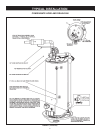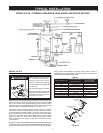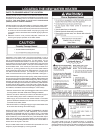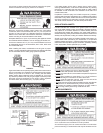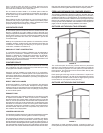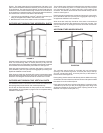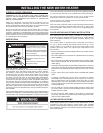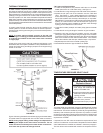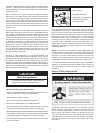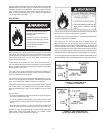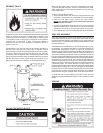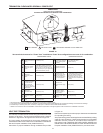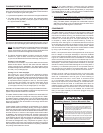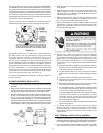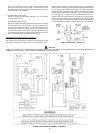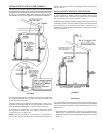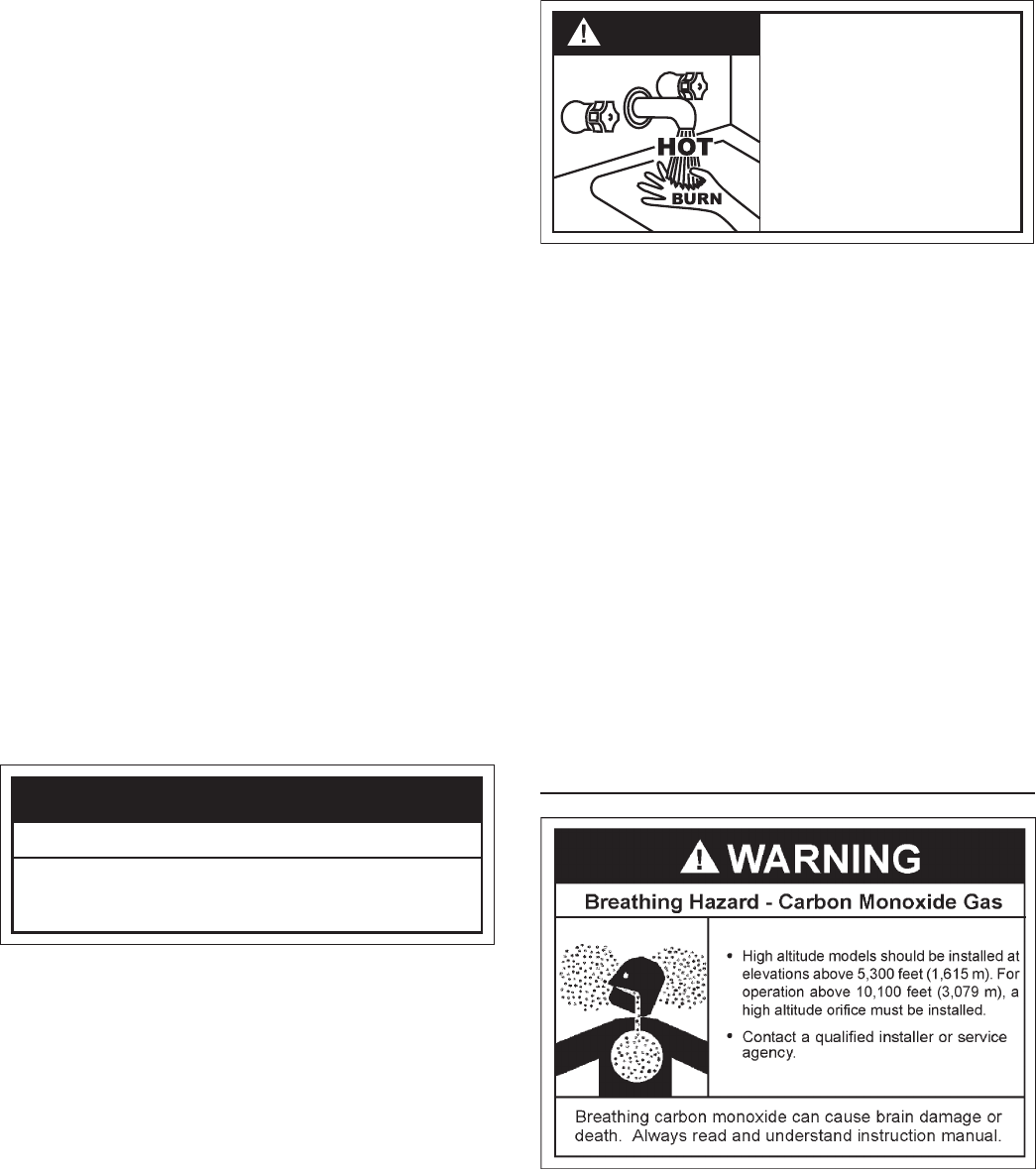
16
exceed the marked hydrostatic working pressure of the water heater
(150 psi = 1,035 kPa) and a discharge capacity not less than the
waterheaterBtu/hrorkWinputrateasshownonthewaterheater’s
model rating plate.
Note: In addition to the factory installed Temperature-Pressure
Relief Valve on the water heater, each remote storage tank that
may be installed and piped to a water heating appliance must also
have its own properly sized, rated and approved Temperature-
Pressure Relief Valve installed. Call the toll free technical support
phone number listed on the back cover of this manual for technical
assistance in sizing a Temperature-Pressure Relief Valve for remote
storage tanks.
For safe operation of the water heater, the Temperature-Pressure
Relief Valve must not be removed from its designated opening
nor plugged. The Temperature-Pressure Relief Valve must be
installeddirectlyintothettingofthewaterheaterdesignedforthe
relief valve. Install discharge piping so that any discharge will exit
thepipewithin6inches(15.2cm)aboveanadequateoordrain,
or external to the building. In cold climates it is recommended
that it be terminated at an adequate drain inside the building. Be
certain that no contact is made with any live electrical part. The
discharge opening must not be blocked or reduced in size under
any circumstances. Excessive length, over 30 feet (9.14 m), or use
of more than four elbows can cause restriction and reduce the
discharge capacity of the valve.
No valve or other obstruction is to be placed between the
Temperature-Pressure Relief Valve and the tank. Do not connect
discharge piping directly to the drain unless a 6” (15.2 cm) air gap
is provided. To prevent bodily injury, hazard to life, or property
damage, the relief valve must be allowed to discharge water in
adequate quantities should circumstances demand. If the discharge
pipe is not connected to a drain or other suitable means, the water
owmaycausepropertydamage.
CAUTION
• Temperature-Pressure Relief Valve discharge
pipe must terminate at adequate drain.
Water Damage Hazard
T&P Valve Discharge Pipe Requirements:
• Shouldnotbesmallerinsizethantheoutletpipesizeofthevalve,or
have any reducing couplings or other restrictions.
• Shouldnotbepluggedorblocked.
• Shouldnotbeexposedtofreezingtemperatures.
• Shouldbeofmateriallistedforhotwaterdistribution.
• Shouldbeinstalledsoastoallowcompletedrainageofboththe
Temperature-Pressure Relief Valve and the discharge pipe.
• Mustterminateamaximumofsixinchesaboveaoordrainorexternal
to the building. In cold climates, it is recommended that the discharge
pipe be terminated at an adequate drain inside the building.
• Shouldnothaveanyvalveorotherobstructionbetweentherelief
valve and the drain.
DANGER
• Burn hazard.
• Hot water discharge.
• Keep clear of Temperature-
Pressure Relief Valve
discharge outlet.
The Temperature-Pressure Relief Valve must be manually
operated at least twice a year. Caution should be taken to ensure
that (1) no one is in front of or around the outlet of the Temperature-
Pressure Relief Valve discharge line, and (2) the water manually
discharged will not cause any bodily injury or property damage
because the water may be extremely hot. If after manually
operating the valve, it fails to completely reset and continues
to release water, immediately close the cold water inlet to the
water heater, follow the draining instructions in this manual, and
replace the Temperature-Pressure Relief Valve with a properly
rated/sized new one.
NOTE: The purpose of a Temperature-Pressure Relief Valve is to
prevent excessive temperatures and pressures in the storage tank.
The T&P valve is not intended for the constant relief of thermal
expansion. A properly sized thermal expansion tank must be
installed on all closed systems to control thermal expansion, see
Closed Water Systems and Thermal Expansion on page 14-15.
If you do not understand these instructions or have any questions
regarding the Temperature-Pressure Relief Valve call the toll
free number listed on the back cover of this manual for technical
assistance.
HIGH ALTITUDE INSTALLATION
This heater is approved for operation up to 5,300 feet (1,615 m)
without alteration. High altitude models are available from the
factory for elevations between 5,300 feet (1,615 m) and 10,100
feet (3,079 m). For elevations above 10,100 feet (3,079 m) the
input rating should be reduced at the rate of 4 percent for each
1,000 feet (305 m) above sea level which requires replacement
oftheburnerorice.Contactyourlocalgassupplierforfurther
information.



